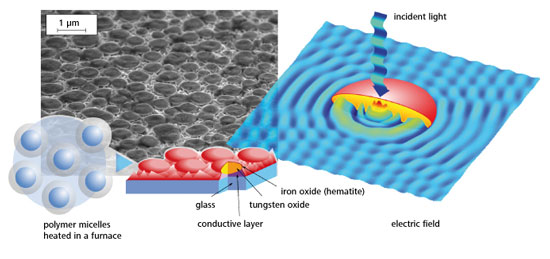 All over the world researchers are investigating solar cells which imitate plant photosynthesis, using sunlight and water to create synthetic fuels such as hydrogen. Empa researchers have developed such a photoelectrochemical cell, recreating a moth's eye to drastically increase its light collecting efficiency. The cell is made of cheap raw materials - iron and tungsten oxide.
All over the world researchers are investigating solar cells which imitate plant photosynthesis, using sunlight and water to create synthetic fuels such as hydrogen. Empa researchers have developed such a photoelectrochemical cell, recreating a moth's eye to drastically increase its light collecting efficiency. The cell is made of cheap raw materials - iron and tungsten oxide.
Jun 18th, 2014
Read more
 'Electroanalysis-Based Clinical Diagnostics' is an Electroanalysis Special Issue gathering the latest achievements in the design, fabrication and applications of electroanalysis-based devices in clinical field.
'Electroanalysis-Based Clinical Diagnostics' is an Electroanalysis Special Issue gathering the latest achievements in the design, fabrication and applications of electroanalysis-based devices in clinical field.
Jun 18th, 2014
Read more
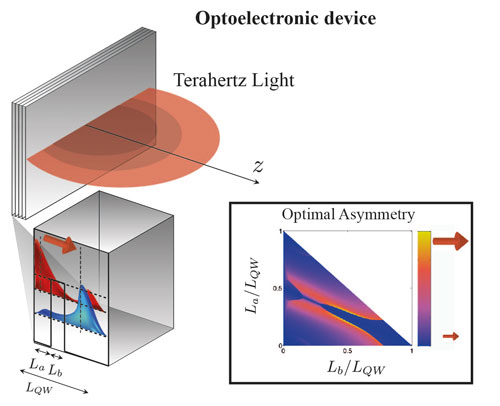 Scientists have found that two-dimensional nanostructures with asymmetric design enable a new quantum mechanism, triggering the emission of tuneable light at terahertz frequencies-with unprecedented efficiency.
Scientists have found that two-dimensional nanostructures with asymmetric design enable a new quantum mechanism, triggering the emission of tuneable light at terahertz frequencies-with unprecedented efficiency.
Jun 18th, 2014
Read more
Enhanced oxygen delivery to targeted tissues: Use of drug loaded paramagnetic nanoparticles to counter hypoxia in magnet targeted tumors and other oxygen deprived tissues.
Jun 18th, 2014
Read more
New research updates one of the most fundamental concepts in the physics of quantum electronic devices - the standard tunnelling model.
Jun 18th, 2014
Read more
Scientists explored the effect of annealing temperature on structural and magnetic properties of hexaferrite nanoparticles.
Jun 18th, 2014
Read more
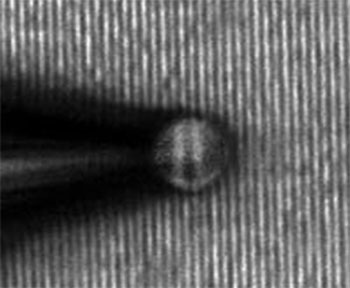 Microspheres and a tiny pipette are all it takes to image surfaces with a resolution below 100 nanometers.
Microspheres and a tiny pipette are all it takes to image surfaces with a resolution below 100 nanometers.
Jun 18th, 2014
Read more
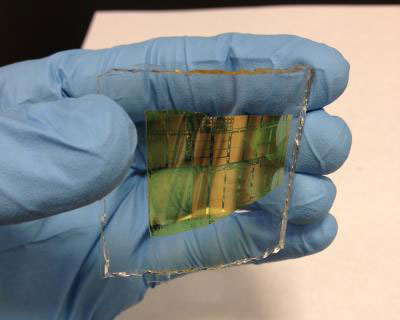 A new flexible and energy-efficient hybrid circuit using carbon nanotubes has big implications for the future of electronics.
A new flexible and energy-efficient hybrid circuit using carbon nanotubes has big implications for the future of electronics.
Jun 17th, 2014
Read more
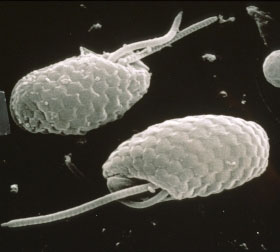 Scientists have discovered how algae that survive in very low levels of light are able to switch on and off a weird quantum phenomenon that occurs during photosynthesis. The function in the algae of this quantum effect, known as coherence, remains a mystery, but it is thought it could help them harvest energy from the sun much more efficiently. Working out its role in a living organism could lead to technological advances, such as better organic solar cells and quantum-based electronic devices.
Scientists have discovered how algae that survive in very low levels of light are able to switch on and off a weird quantum phenomenon that occurs during photosynthesis. The function in the algae of this quantum effect, known as coherence, remains a mystery, but it is thought it could help them harvest energy from the sun much more efficiently. Working out its role in a living organism could lead to technological advances, such as better organic solar cells and quantum-based electronic devices.
Jun 17th, 2014
Read more
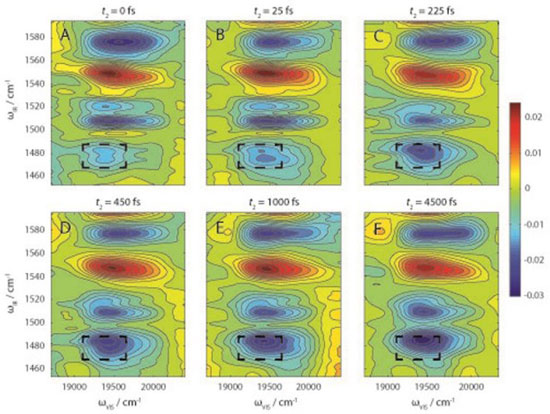 By combining the advantages of two well-established spectroscopy technologies - 2D-electronic and 2D-infrared - two-dimensional electronic-vibrational spectroscopy (2D-EV) is the first that can be used to simultaneously monitor electronic and molecular dynamics on a femtosecond time-scale. The results show how the coupling of electronic states and nuclear vibrations affect the outcome of photochemical reactions.
By combining the advantages of two well-established spectroscopy technologies - 2D-electronic and 2D-infrared - two-dimensional electronic-vibrational spectroscopy (2D-EV) is the first that can be used to simultaneously monitor electronic and molecular dynamics on a femtosecond time-scale. The results show how the coupling of electronic states and nuclear vibrations affect the outcome of photochemical reactions.
Jun 17th, 2014
Read more
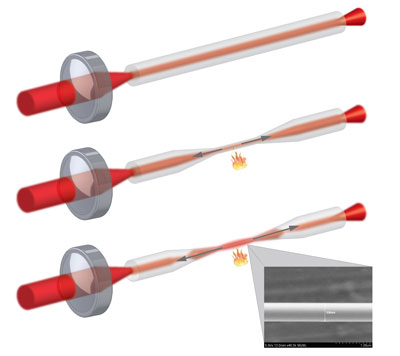 Carefully fabricating nanofibers by heating and pulling may make for highly-efficient, optics-based, low-power atom traps.
Carefully fabricating nanofibers by heating and pulling may make for highly-efficient, optics-based, low-power atom traps.
Jun 17th, 2014
Read more
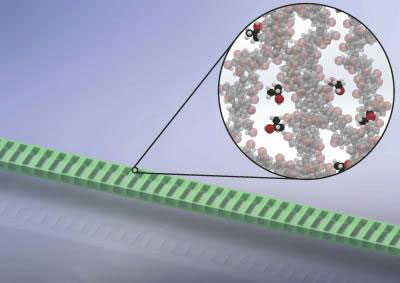 Researchers make novel, high sensitivity optical sensors that swell when exposed to a target gas - potential industrial, security, environmental, and medical applications.
Researchers make novel, high sensitivity optical sensors that swell when exposed to a target gas - potential industrial, security, environmental, and medical applications.
Jun 17th, 2014
Read more
Theoretical calculations indicate the possible existence of fermionic matter in apreviously unknown state in the form of a one-dimensional liquid
Jun 17th, 2014
Read more
Researchers have introduced a new method of detection that allows the entire class of methamphetamine drugs to be detected in water. A probe equipped with synthetic receptor molecules responds to a grouping of atoms that is present in all methamphetamines.
Jun 17th, 2014
Read more
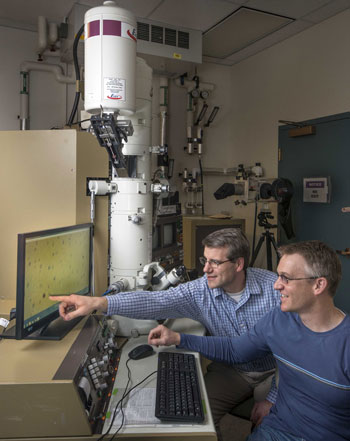 Sandia National Laboratories has come up with an inexpensive way to synthesize titanium-dioxide nanoparticles and is seeking partners who can demonstrate the process at industrial scale for everything from solar cells to light-emitting diodes (LEDs).
Sandia National Laboratories has come up with an inexpensive way to synthesize titanium-dioxide nanoparticles and is seeking partners who can demonstrate the process at industrial scale for everything from solar cells to light-emitting diodes (LEDs).
Jun 17th, 2014
Read more
Scientists are using a pioneering method of 'caging' and cooling water molecules to study the change in orientation of the magnetic nuclei at the centre of each hydrogen atom - a process which transforms the molecule from one form of water to another.
Jun 17th, 2014
Read more
 All over the world researchers are investigating solar cells which imitate plant photosynthesis, using sunlight and water to create synthetic fuels such as hydrogen. Empa researchers have developed such a photoelectrochemical cell, recreating a moth's eye to drastically increase its light collecting efficiency. The cell is made of cheap raw materials - iron and tungsten oxide.
All over the world researchers are investigating solar cells which imitate plant photosynthesis, using sunlight and water to create synthetic fuels such as hydrogen. Empa researchers have developed such a photoelectrochemical cell, recreating a moth's eye to drastically increase its light collecting efficiency. The cell is made of cheap raw materials - iron and tungsten oxide.









 Subscribe to our Nanotechnology News feed
Subscribe to our Nanotechnology News feed